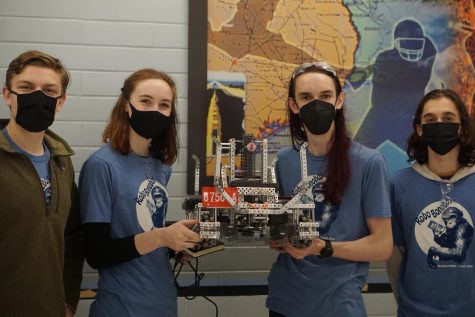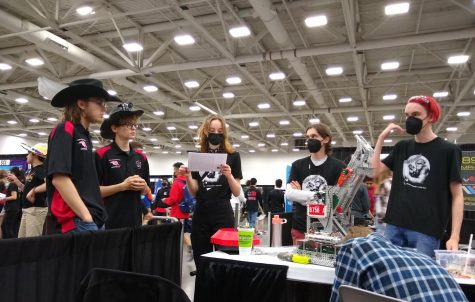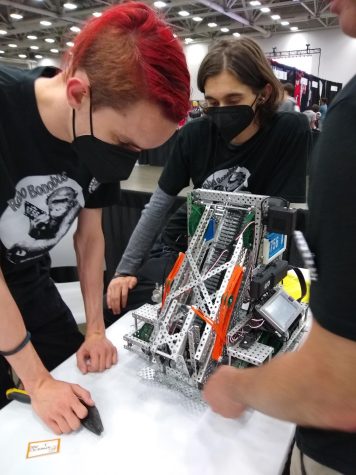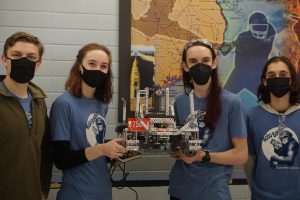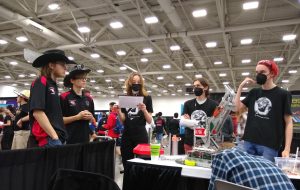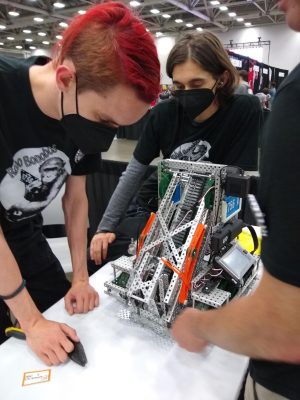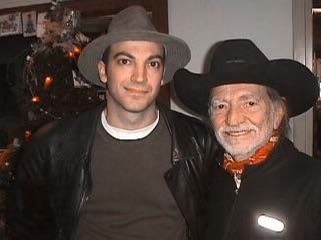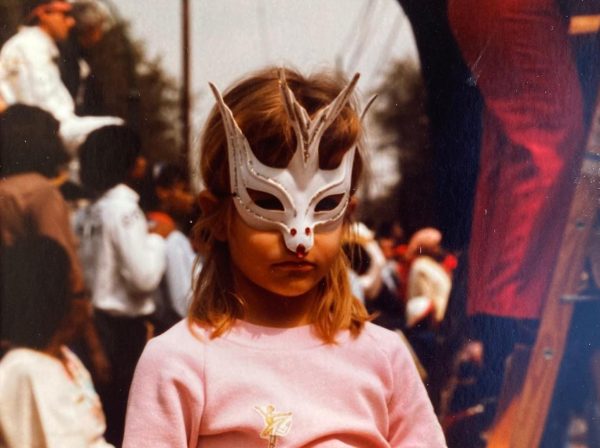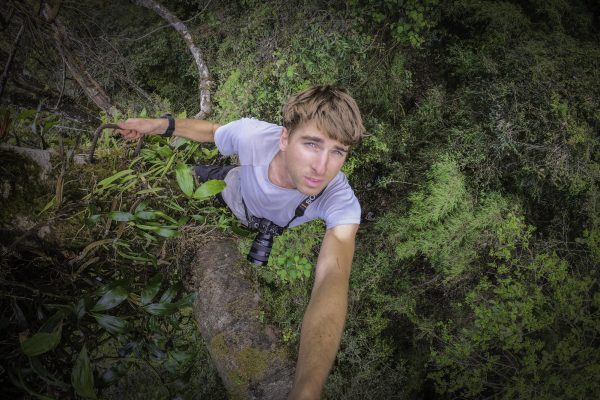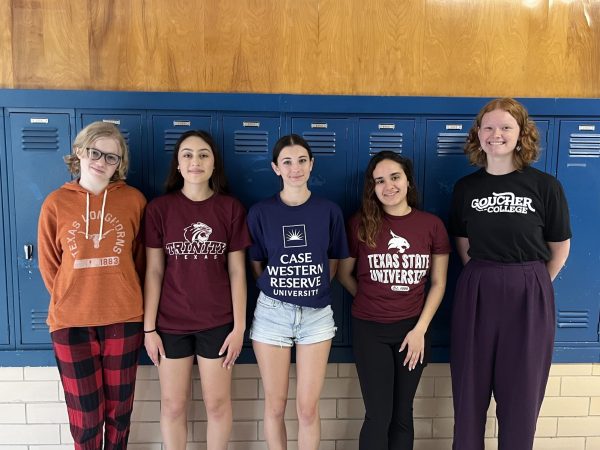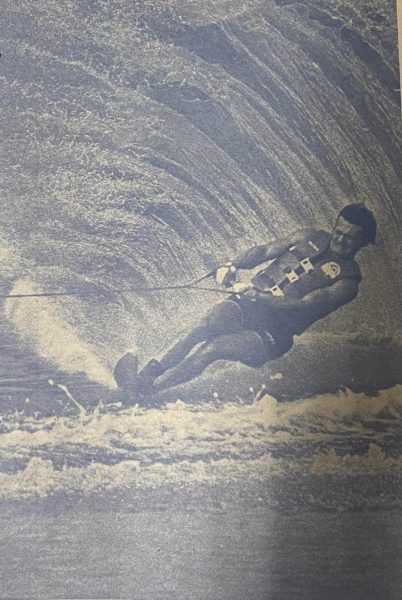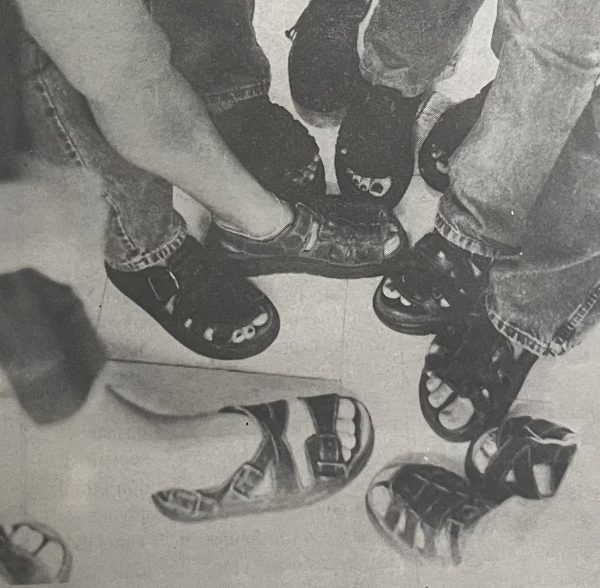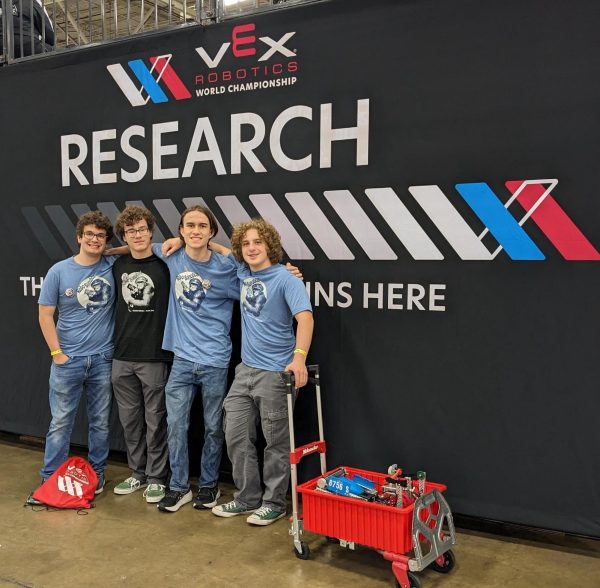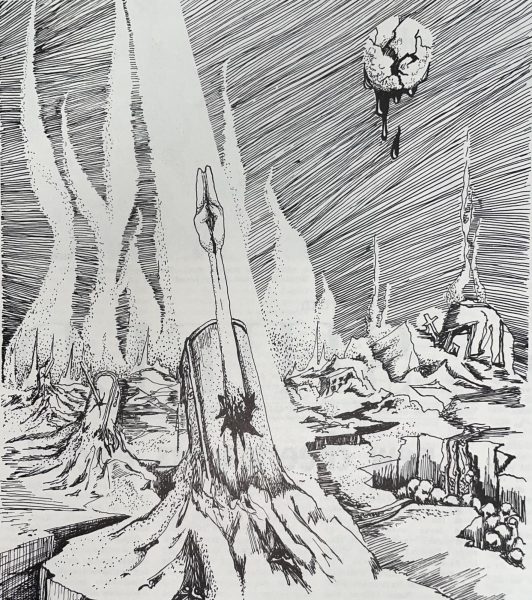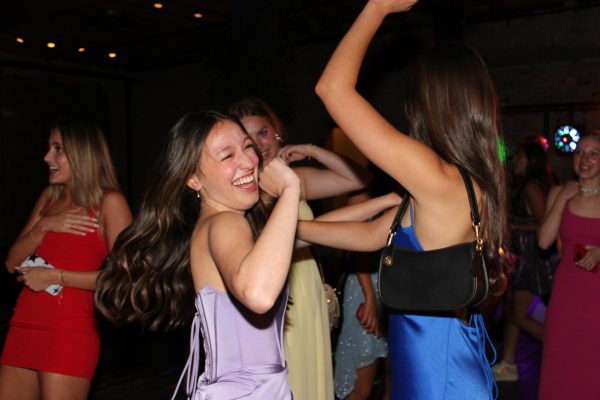Mac robotics shoots and scores at home tournament
In second tournament, teamwork, strategy are strengths
December 21, 2022
The McCallum robotics program competed in its second tournament of the season on Saturday, Dec. 3, this time as hosts. Teams competed in alliances to score points by shooting disks into levitating goals, owning rollers and covering field tiles at the end of the match. With 18 different teams in attendance, including four from McCallum, it was a competitive field.
The top-finishing Mac team was the G team which came in eighth place. The M team finished just behind, in ninth place. The S team finished 11th and the Zinc team finished 17th.
Next semester, the teams will be able to improve their robots in preparation for the next tournament which will be held at Anderson High School on Jan. 21.
We are pleased to present photos of the Dec. 3 tournament in this week’s Tuesday Top 10.
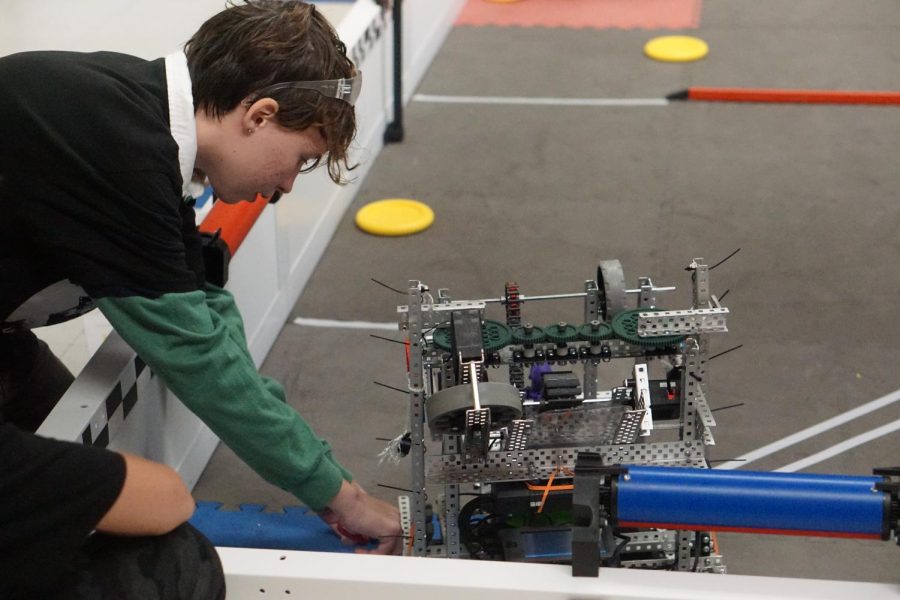
GAME READY: After practicing with the robot and seeing what to work on, freshman Hayes Alexander makes a few last adjustments to help the robot perform at its best before a new game.
“When using the robot, something usually goes wrong at some point or another,” Alexander said. “It is a cycle of something going on and then fixing it so we are always working to improve our robot more.”
The McCallum teams are going to more competitions like this in the future and will be working on completing the robot.
Photo and caption by Stella Little.
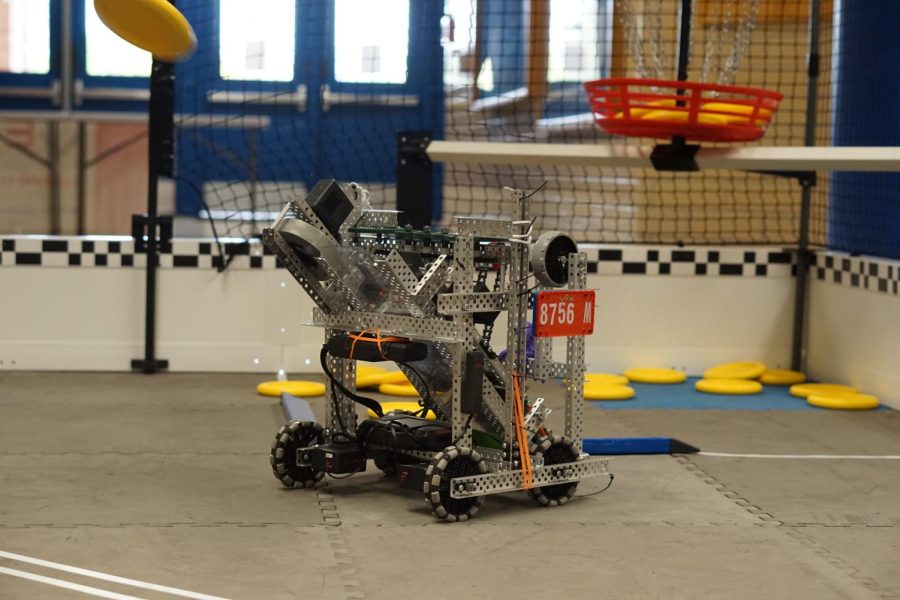
SHOOT FOR THE HOOP: Each team had to create a robot that could send a disk into a hoop. McCallum engineering teacher and robotics sponsor Audrea Moyers said that the teams exhibited good teamwork and motivation at the tournament. “I think our teams did well and we saw improvements,” Moyers said. “I think they’re in good shape for getting ready for their next tournament.” Photo and caption by Vivian Medina.
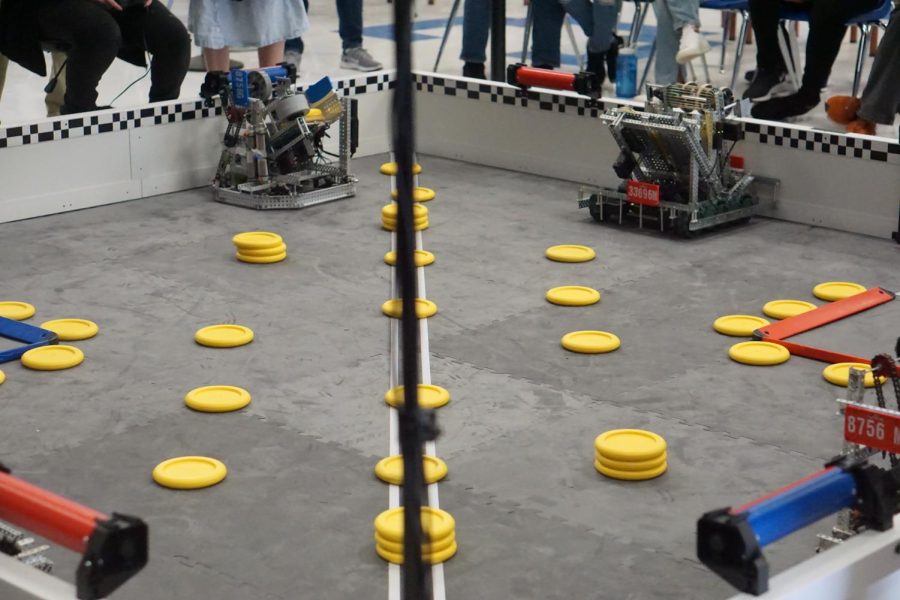
NEW ALLIANCE: In a match at this competition, there were four robots divided into two teams. McCallum’s robotics M team dove into an alliance with the red team. This is not one of McCallum’s other teams, though. The robotics teams randomly matched with a school at random.
The robotics teams have to change their focal point each round based on the strengths and weaknesses of the team they are matched with. The teams have to collaborative to arrive at a strategy that maximizes each team’s strengths. One team usually focuses on attacking while the other concentrates on defense.
Photo and caption by Stella Little.
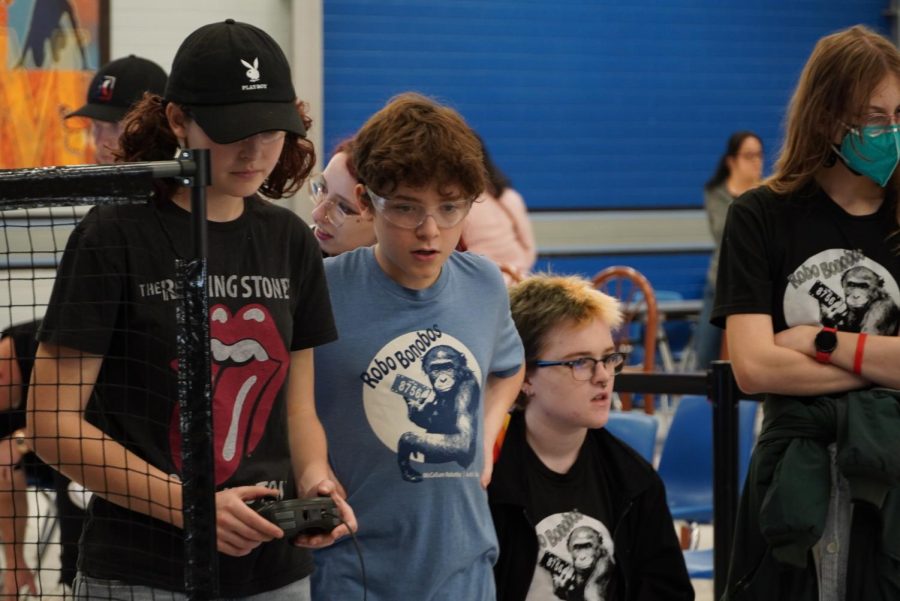
TEAMWORK MAKES THE DREAM WORK: Sophomores Zita Conradie and Miles Baade had to be in synch during their matches. Baade says when he’s on the sideline by Conradie, the driver of the team’s robot, communication is key.
“When my teammates are driving I normally am telling them what else is happening on the field so they are aware of it,” Baade said. “Sometimes it’s hard for drivers to focus on the other things because they are zoned in on what they are doing in their own robots.”
Baade’s Zinc team placed 17th. They had a few technical difficulties, but they were still able to work well together during the hard circumstances.
“We didn’t do too great, but we worked together well as teams and communicated well,” Baade said
Photo and caption by Lillian Gray.
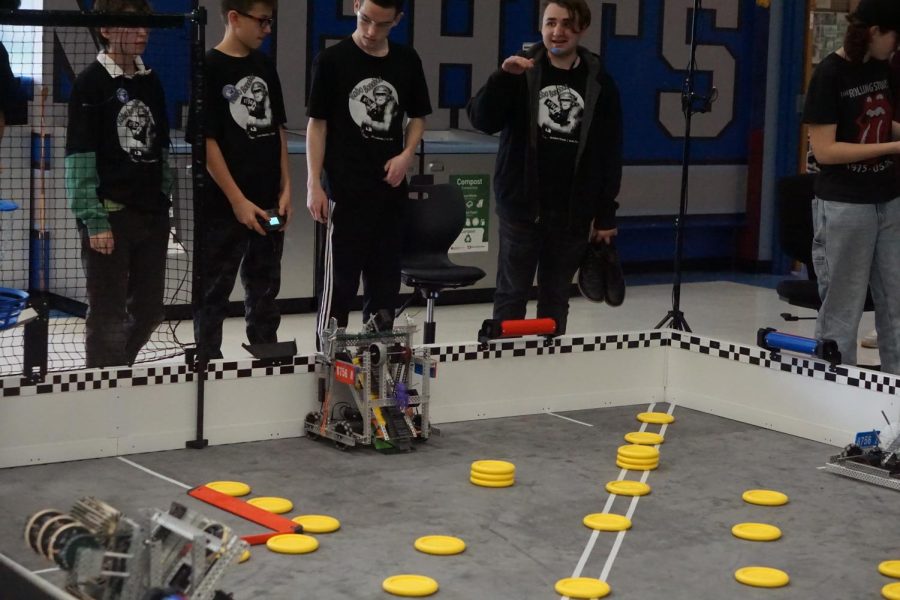
STRATEGIZE: Before the match starts, the team discusses the best way to control the robot in this round of the tournament. There are different challenges in every round of the tournament, and the teams strategize with that in mind.
“We are usually discussing the specifics in the round and what to do,” freshman Hayes Alexander said. “Normally we talk with the team we are paired with first so we can strategize.”
This strategy helped the team a lot through the tournament. In the end, the M team got ninth place while only being a first-year team.
Photo and caption by Stella Little.
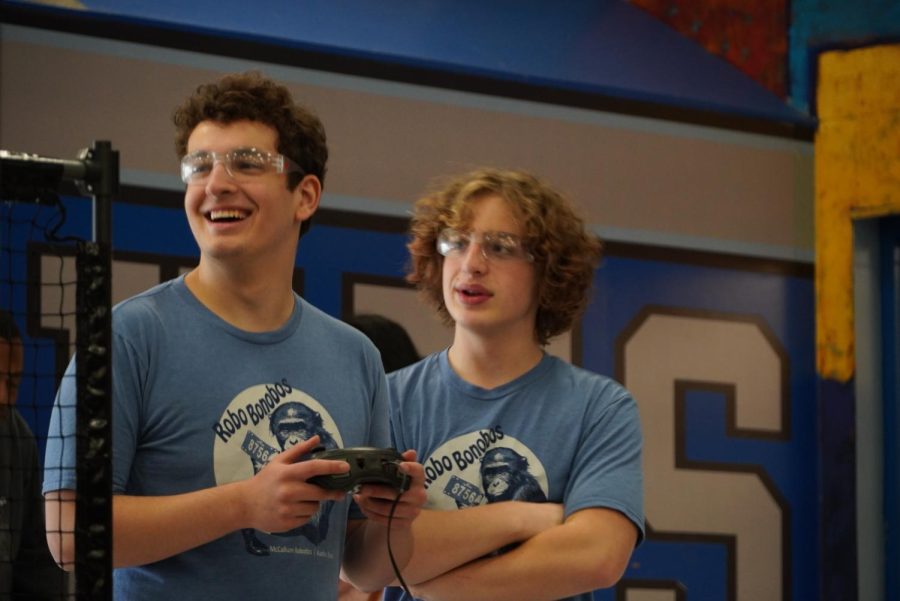
BETTER TOGETHER: Sophomore Zane Wiggins converses with his new teammate, junior Jesse Silverman. Wiggins felt his team did well, and that they have been showing improvement and more ambition so far this season.
“It can be stressful because you don’t know these people or what their robot can do,” Wiggins said. “The best thing you can do is talk with them before the match and come up with a strategy.”
Although meeting their new teammates can be challenging at first, everyone is ultimately working towards the same goal.
“I’ve yet to meet a team that was rude or disrespectful because in the end, it’s just for fun,” Wiggins said.
Photo and caption by Lillian Gray.
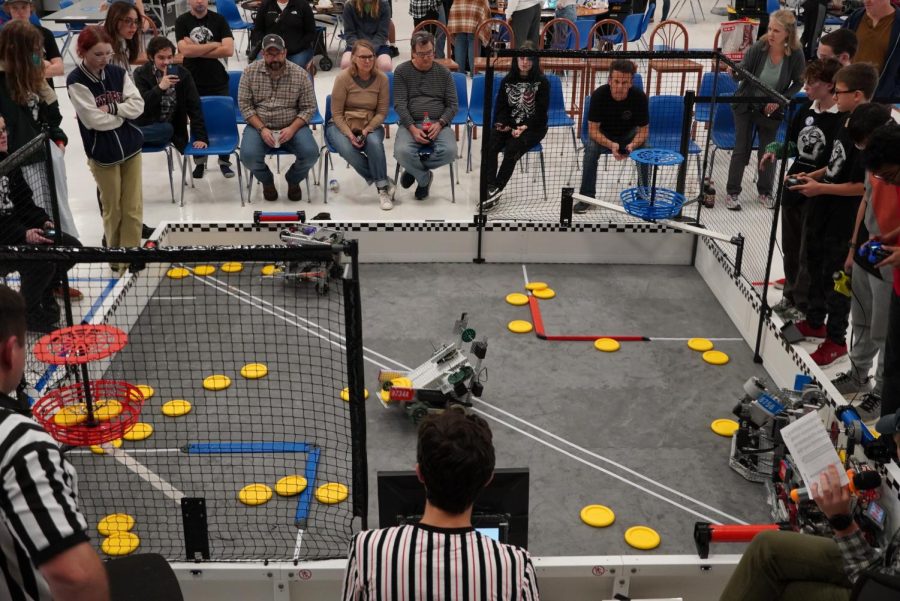
GOAL AFTER GOAL: The goal of the robotics team changes every year, with different courses that challenge the engineers. This year was a basketball-style course that forced the engineers to create a shooting mechanism for their robots. According to Sophomore Zane Wiggins, his team, the S team, was able to maneuver around the course and get up some good throws.
“The whole point of it is to shoot disks into the goals elevated above the course,” Wiggins said. “You had to shoot them there using your robot. Our ability to actually score goals was actually really good.”
With little experience so far this season, Wiggins feels that the team is in a good place, especially since this tournament will help them make more helpful adjustments to their robot.
“This is our second tournament of the season, and now we know many things about our robot that we can change,” Wiggins said.
Photo and caption by Lillian Gray.
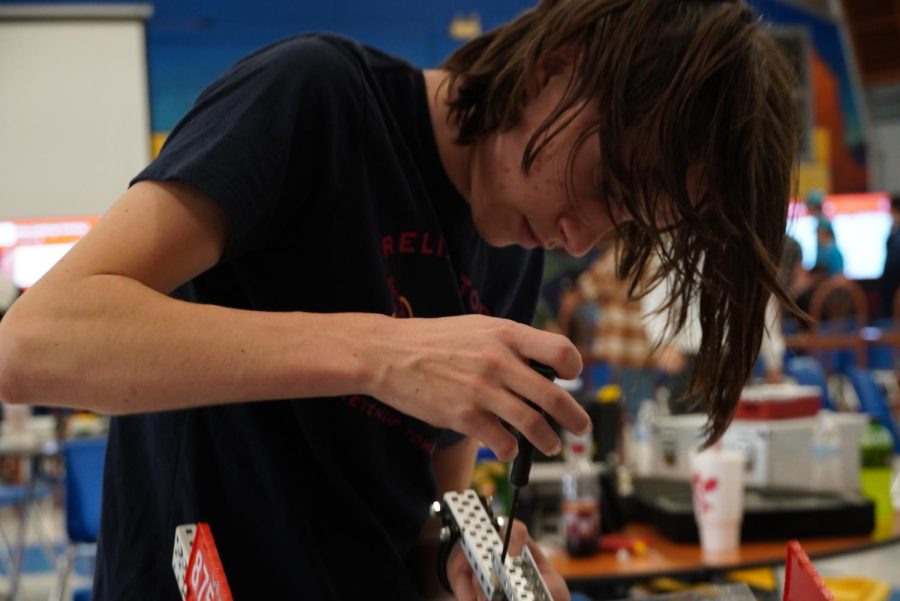
BUIlDING BETTER BOTS: After matches, the engineers headed back to their tables or went to practice in the practice area. For junior Henry Holmes, fixing temporary issues with his robot was an important job he had to do.
“I was trying to put a roller on the top part of the robot, but most of the work on the robot was to try to fix our intake system since it was very high maintenance at the time,” Holmes said.
For Holmes and his team, the effort of tweaking the robot’s system helped during the matches.
“Our intake system ran much smoother every time we worked on it,” Holmes said. “But I wasn’t very successful in installing a roller system.”
Photo and caption by Lillian Gray.



